Python is widely used by developers to do just about anything including web development, data science, machine learning, system automation, penetration testing and more. This general-purpose language is an open source project that has been around since the late 1980s and supported by a big developer community. Python is now (2019) considered the fastest growing programming language 📈 (according to PYPL and Stack Overflow).
Python’s versatility, easiness to learn, large developer community and high paying job opportunities, make it the perfect first or next programming language to learn. But is Python the perfect fit for you? Let’s find out.
A Short History of Python
The programming language Python was conceptualized in the late 1980s by Guido van Rossum at CWI in the Netherlands as a successor to the ABC language. Python got its name from the BBC TV show Monty Python’s Flying Circus. In December of 1989, van Rossum started the implementation of Python and finally published the code of version 0.9.0 in 1991.
Python 1.0 🐍
Released: January 1999
Featured the functional programming tools lambda, map, filter and reduce.
Python 2.0 🐍🐍
Released: October 2000
Featured list comprehensions and a garbage collection system.
Python 3.0 🐍🐍🐍
Released: December 2008
Not compatible with 2.x and was released as a major revision of the prior versions.
At the time this post was created, the current version is Python 3.7, which was released in June 2018. Nevertheless, Python 2.x is still widely used by the community + companies and you’ll still find some people preferring 2.x over 3.x.
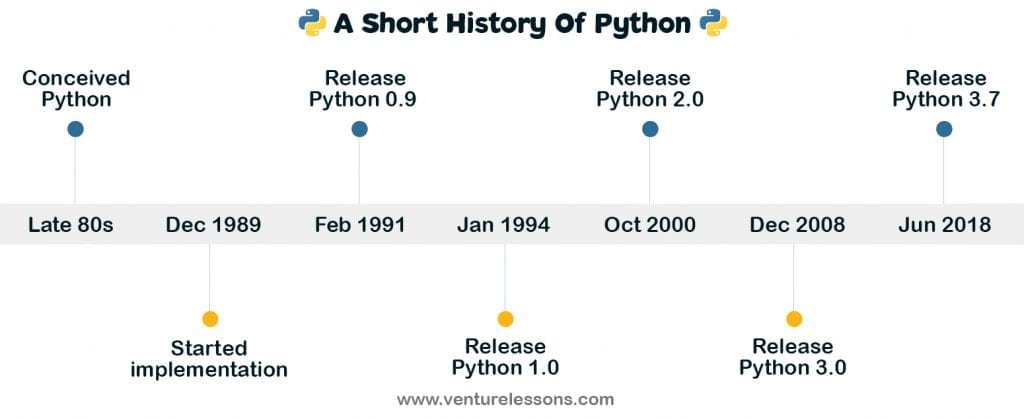
Things You Can Do With Python
Python is everywhere and it is a very versatile programming language. Even if you only understand the basics, with the help of some libraries and frameworks you’ll be able to accomplish many impressive tasks (and entire projects).
The language is used in various fields including web development, data science, machine learning, finance, mathematical computing and cybersecurity. A few cool examples include:
- The International Space Station‘s Robonaut 2 robot uses Python for its central command system 🚀
- Netflix uses Python to ensure your movies play without buffering and stopping.
- The Nodality company uses Python in its quest to cure cancer.
- Disney uses Python for animation.
- Activision uses Python to test, analyze and create video games.
Many developers choose to use frameworks for their development. A framework’s role is to make your development job easier by providing a structure that comes with modules and packages that allow you to build applications faster.
Following are just a few examples from the massive catalog of Python frameworks:
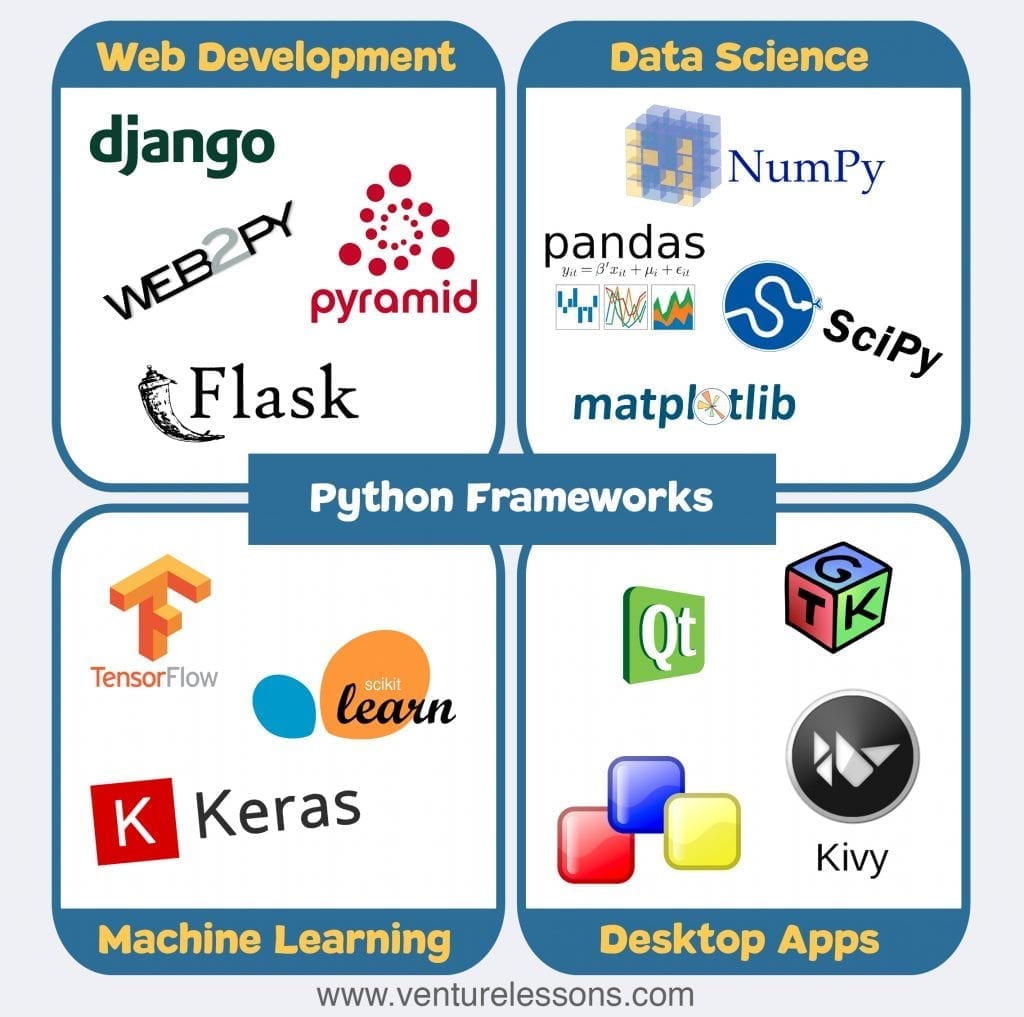
What Python Code Looks Like
Let’s stick with the tradition and look at a “Hello, World!” example. A very simple program with the sole purpose of displaying the message Hello, World!
In Python (3.x) the Hello, World! example program would look like this:
print("Hello, World!")In C++ the same program would look like this:
class HelloWorld
{
public:
void PrintHelloWorld()
{
std::cout << "Hello, World!\n";
}
};And for comparison in Java:
public class HelloWorld {
public static void main(String[] args) {
System.out.println("Hello, World!");
}
}I love this example because it really shows you the simplicity of the Python syntax. You don’t have to learn lots of complex rules. I believe that much of the Python syntax could even be understood by people with no programming experience, it really is that simple 🔥
Python Growth (Popularity)
Python is currently the most popular programming language taught in introductory computer science courses across the U.S. (Source) It is also the fastest growing programming language and there is no reason to believe that the growth will be slowing down anytime soon.
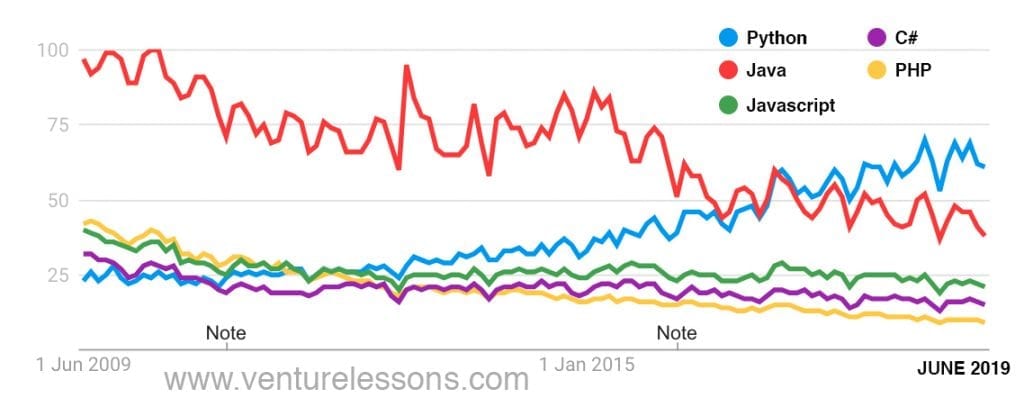
And some of the most successful companies in the world are using it. Here are just a few examples of companies using Python.
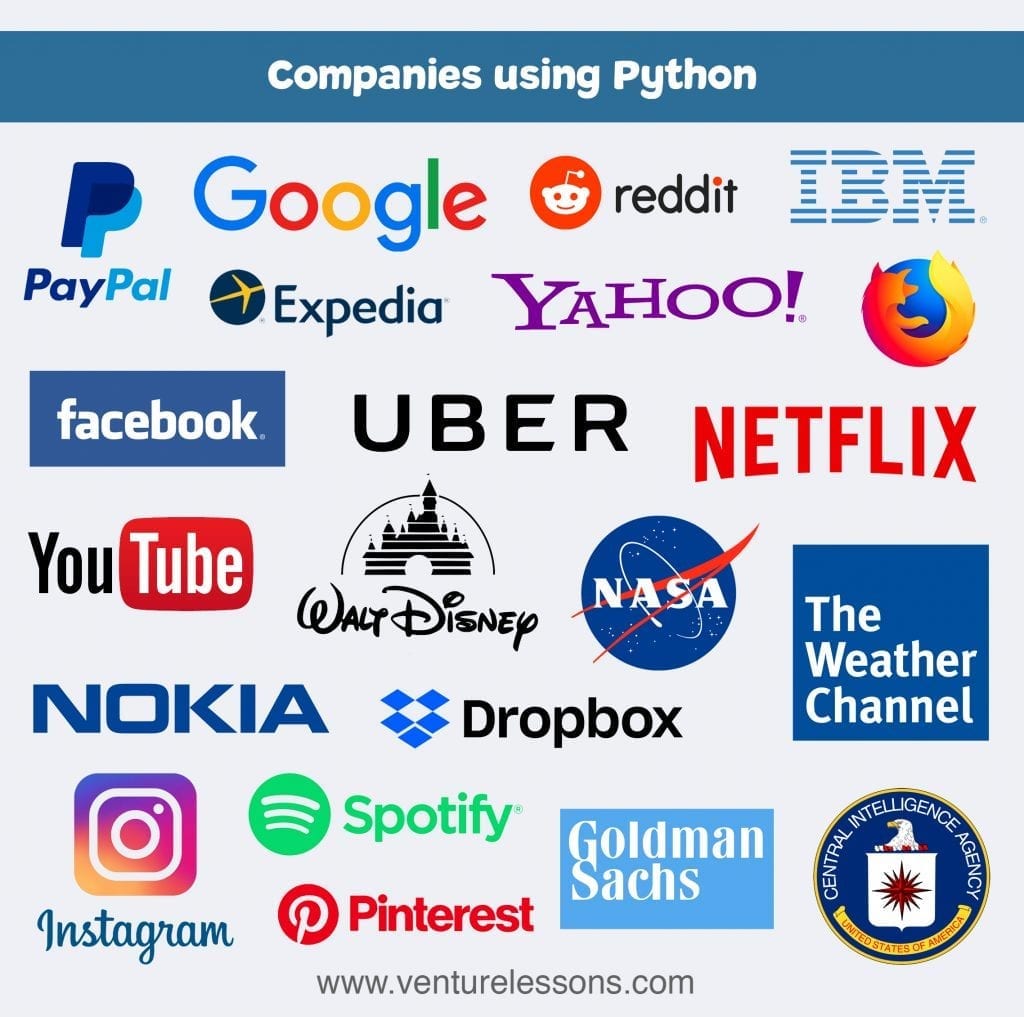
According to StackOverflow’s 2019 developer survey, it is also the most “want to pick-up” language for developers 👍
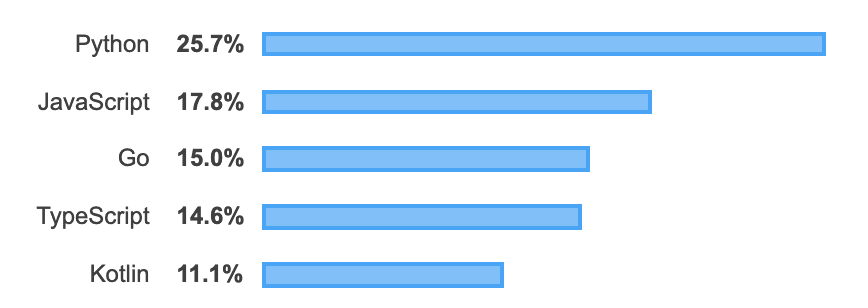
Job Opportunities & Salaries
There is a very high demand for Python developers in various industries. Python is an all-around talent so companies use it for different tasks including web dev, data science, machine learning and many more.
Further, Python is a great fit for risk-averse developers 😉. Companies are spending a lot of money developing their systems using Python when a new language comes around there will be a lot of opportunities to maintain their old code bases 🤖
Sooo… how many Python jobs are out there? I did a quick search for “Python” as a skill on a few job platforms and this came up:
LinkedIn: 120,000+ jobs
Indeed: 68,000+ jobs
SimplyHired: 49,000+ jobs
Dice: 9,000+ jobs
Angel.co: 3,000+ jobs
And a lot of those jobs come with a high paying salary 💲💲💲 Python engineers have some of the highest salaries in the industry with an average salary between $110,021 and $123,743 per year according to Daxx. To be more precise check out this salary breakdown by state:
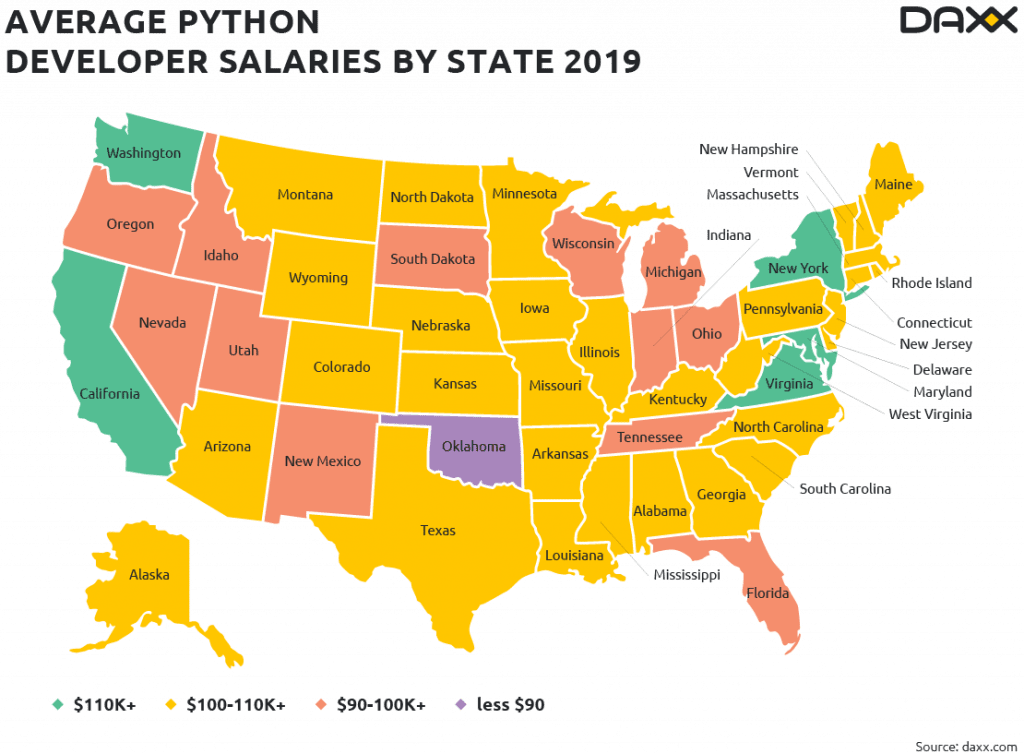
So it might be time to re-evaluate your move to Oklahoma 😉
Jokes aside, it looks like you can live a very comfortable life almost anywhere with a Python developer salary.
Conclusion
I don’t even know if a conclusion is needed, go out learn Python! There won’t be a better time to pick up the language. The job market looks great, the language is easy to learn, the community is amazing and there are lots of opportunities to discover your dream career.
